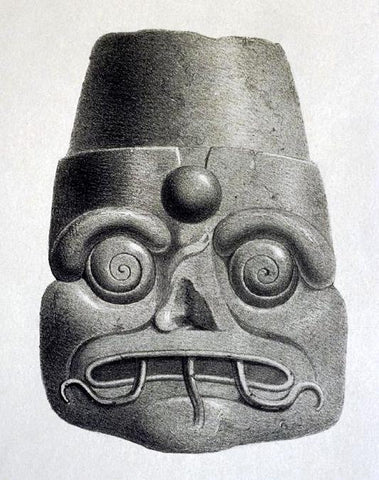Masks in Performing Arts | Máscaras: The Rich Tradition of Masks in Mexico
by Second Nature on October 01, 2023
Historical Roots
The use of masks in Mexico traces its roots back to ancient civilizations such as the Aztecs, Mayans, and Olmecs. These indigenous cultures crafted masks for religious ceremonies, dances, and theatrical performances. With the arrival of the Spanish conquistadors in the 16th century, European influences merged with indigenous traditions, further enriching the mask-making culture.

Types of Máscaras
Dance Masks: One of the most prominent uses of masks in Mexico is in traditional dances. Dancers wear masks that represent various characters, such as animals, mythological beings, and historical figures. These masks often feature bold colors, intricate designs, and feathers, creating visually striking performances.

Ceremonial Masks: Ceremonial masks are used in religious rituals and festivals. They can represent deities, spirits, or ancestors and are believed to help the wearer channel the essence of the entity they portray.


Cultural Significance
Máscaras hold profound cultural significance in Mexico:
Religious and Spiritual Connections: Masks play a central role in many indigenous and syncretic religious practices in Mexico. They are used to represent deities, saints, and spirits during rituals, creating a connection between the physical and spiritual realms.


Festivals and Celebrations: Masks are a vital part of Mexican festivals, such as Dia de los Muertos (Day of the Dead) and Carnaval. They add a vibrant and colorful dimension to these celebrations, allowing people to express themselves and pay homage to their ancestors.
Theater and Performance: Masks are used in Mexican theatrical performances, including the famous Lucha Libre (wrestling) matches, where wrestlers don masks to take on persona and character.
Contemporary and Artistic Expression
Máscaras continue to evolve as a form of artistic expression in modern Mexico. Contemporary artists incorporate traditional mask-making techniques into their work, creating pieces that are both rooted in tradition and reflective of contemporary themes. These masks often serve as statements on cultural identity, politics, and social issues.
Conclusion
Máscaras are not mere accessories or decorative items in Mexico; they are living symbols of a rich cultural tapestry that spans thousands of years. Whether used in sacred ceremonies, festive celebrations, or artistic creations, masks remain an essential part of Mexican identity and heritage. They serve as a testament to the enduring power of tradition and artistry in Mexican society, fostering a profound connection between the past and the present.






